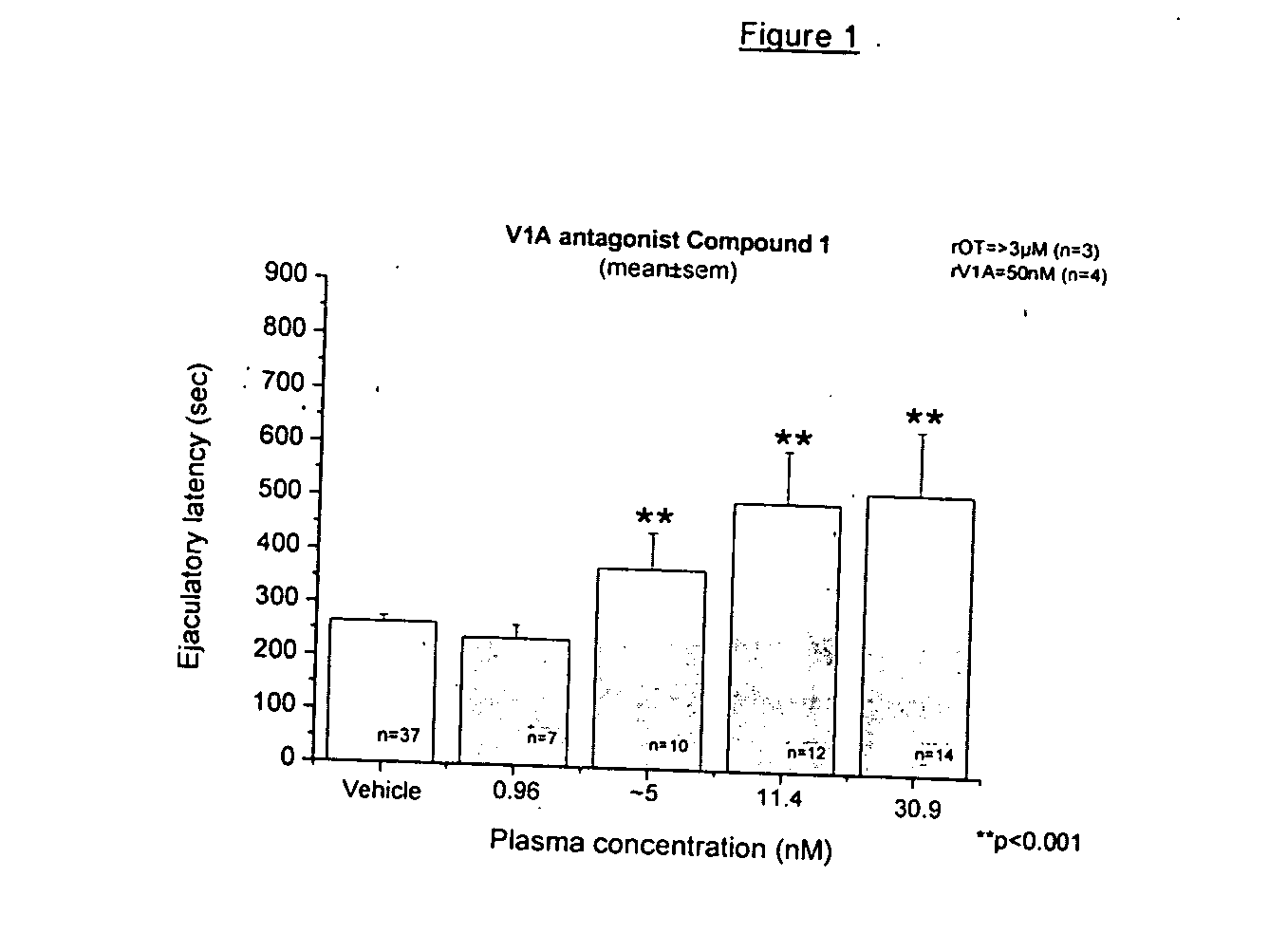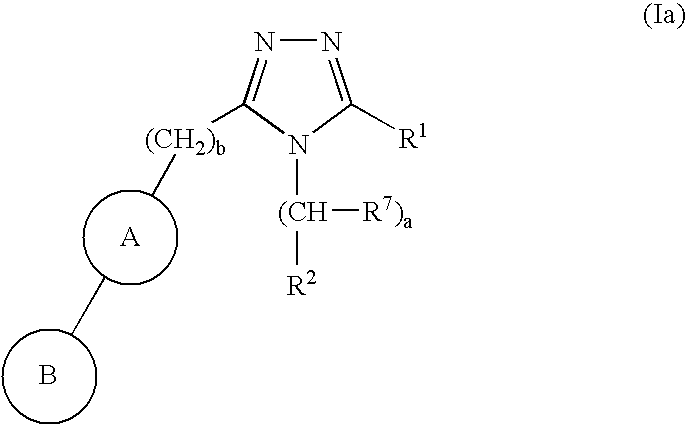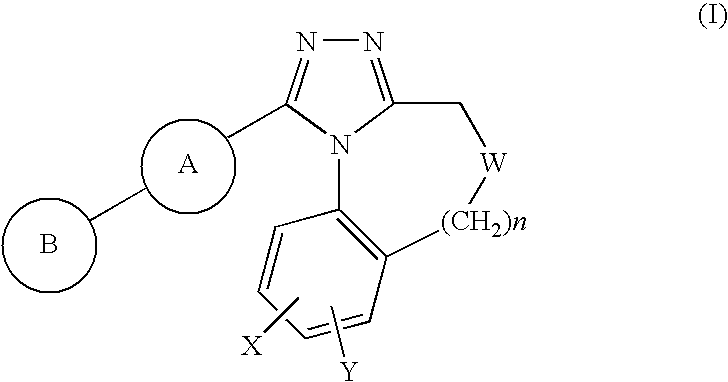Treatment of male sexual dysfunction
a technology of vasopressin and treatment method, applied in the field of treatment of male sexual dysfunction, can solve the problems of affecting both males and females, affecting sexual performance, and reducing self-esteem, and achieve the effects of reducing self-esteem, reducing sexual performance, and reducing sexual performan
- Summary
- Abstract
- Description
- Claims
- Application Information
AI Technical Summary
Problems solved by technology
Method used
Image
Examples
example 1
Vasopressin V1a Antagonists Delay Ejaculation in Anaesthetised Rats
In order to study penile; erection and ejaculation the method used was based on the methodology taught in Yonezawa et al. (2000) Life Sciences 67, 3031-3039. For ease of reference, this methodology is described below:
Male Sprague Dawley rats, weighing 350-450 g, are used. Prior to the experiments the animals are housed in groups (2 rats per cage) under controlled 12 h light-dark cycle (lights on at 07:00), constant temperature (23±1° C.) and humidity (55±5%). They have free access to standard food pellets and water.
Rats are anesthestised with sodium pentobarbitone (50 mg / kg, i.p.) and are placed in the supine position. The penis is extruded from its sheath and gently held by a wooden applicator positioned at the base of the penis. The test compounds are administered by intravenous infusion and p-chloroamphetamine (PCA) (5-10 mg / kg) is administered i.p. immediately before the sheath retraction and the penile res...
example 1a
Delaying Ejaculation in the Presence of a Selective Vasopressin V1A Receptor Antagonist (Compound 1)
A vasopressin V1A receptor antagonist, compound 1, significantly delayed p-chloroamphetamine (PCA)-induced ejaculation at vasopressin selective doses in anaesthetised rats (plasma concentration of 9-31 nM). Ejaculation was delayed 100% (near maximal effect) at free plasma concentrations 30.9 nM (0.6×Ki V1a, see FIG. 1)—it has been assumed that at these doses any activity arises from antagonism of vasopressin V1a receptors since at the plasma concentration at which the compound delayed ejaculation, compound 1 would display minimal if any activity at oxytocin receptors (<0.01 Ki OT).
Erectogenic mechanisms were largely unaffected by vasopressin V1a receptor blockade—the time taken for the rats to achieve erection was not significantly affected by compound 1 neither was the quality of penile erection—the number of penile cups and flares was similar in control and vasopressin V1A ...
example 1b
Effect of a Vasopressin V1a Receptor Antagonist (L-371257) on Copulatory Behaviour in Rats
Rodent copulatory behaviour is characterised by a series of mounts, with and without vaginal insertion (50-80% of mounts result in intromission [vaginal penetration]) and ejaculation occurs after 6 to 12 intromissions. Each intromission lasts a matter of seconds—it is not possible to quantify intromission length i.e. intravaginal latency. The effect of L-371257 was assessed on a number of copulatory parameters (see above). We have focused ejaculatory latency as a clinical biomarker of time taken to achieve ejaculation.
L-371257, a V1a antagonist, increased ejaculatory latency by 67% in conscious rats (P<0.05); i.e. L-371257-treated animals took 266 s to ejaculate compared to 160 s in vehicle treated animals (see Table 2 below). There were no other significant effects of on copulatory behaviour. At the dose tested, L-371257 is likely to be selective for vasopressin V1a receptors (See exa...
PUM
| Property | Measurement | Unit |
|---|---|---|
| structure | aaaaa | aaaaa |
| radioactivity | aaaaa | aaaaa |
| Disorders | aaaaa | aaaaa |
Abstract
Description
Claims
Application Information
 Login to View More
Login to View More - R&D
- Intellectual Property
- Life Sciences
- Materials
- Tech Scout
- Unparalleled Data Quality
- Higher Quality Content
- 60% Fewer Hallucinations
Browse by: Latest US Patents, China's latest patents, Technical Efficacy Thesaurus, Application Domain, Technology Topic, Popular Technical Reports.
© 2025 PatSnap. All rights reserved.Legal|Privacy policy|Modern Slavery Act Transparency Statement|Sitemap|About US| Contact US: help@patsnap.com



